It is probably easiest if I just come out and say it like this: The XPAN will forever hold a special place in my heart.
It’s been two years since I’ve owned it, and roughly 200 or so rolls later, I don’t have any plans to sell it. I have made some of my favourite images with it and have enjoyed shooting it tremendously. I will go into more details obviously, but if you wanted the short version, there it is. You can zone out and just look at the photos now if you wish.
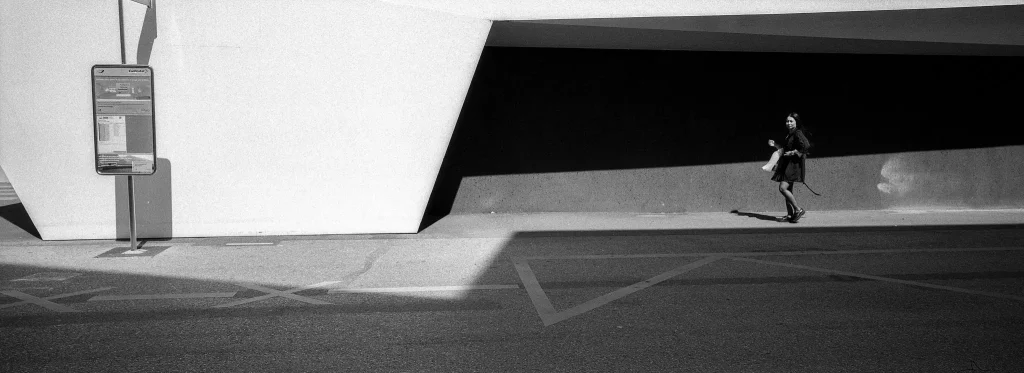
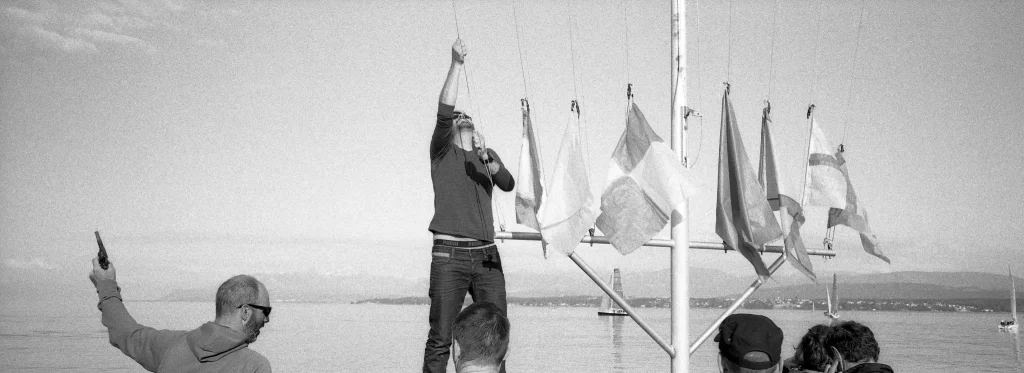
For those interested in more details, I wanted to submit this review of the Hasselblad XPAN to 35mmc for a couple of reasons. Firstly, I have frequently used this website as a source of inspiration and information as I have weighed up various gear purchases. I felt it was a good way to give back to the community. Secondly, while there are a number of reviews on the XPAN here already, I wanted to provide a counterpoint to Hamish’s review, which was coming from a rather ‘ho hum’ experience. This review should hopefully give you another perspective on the camera and maybe inspire you to pick up a wide format camera.
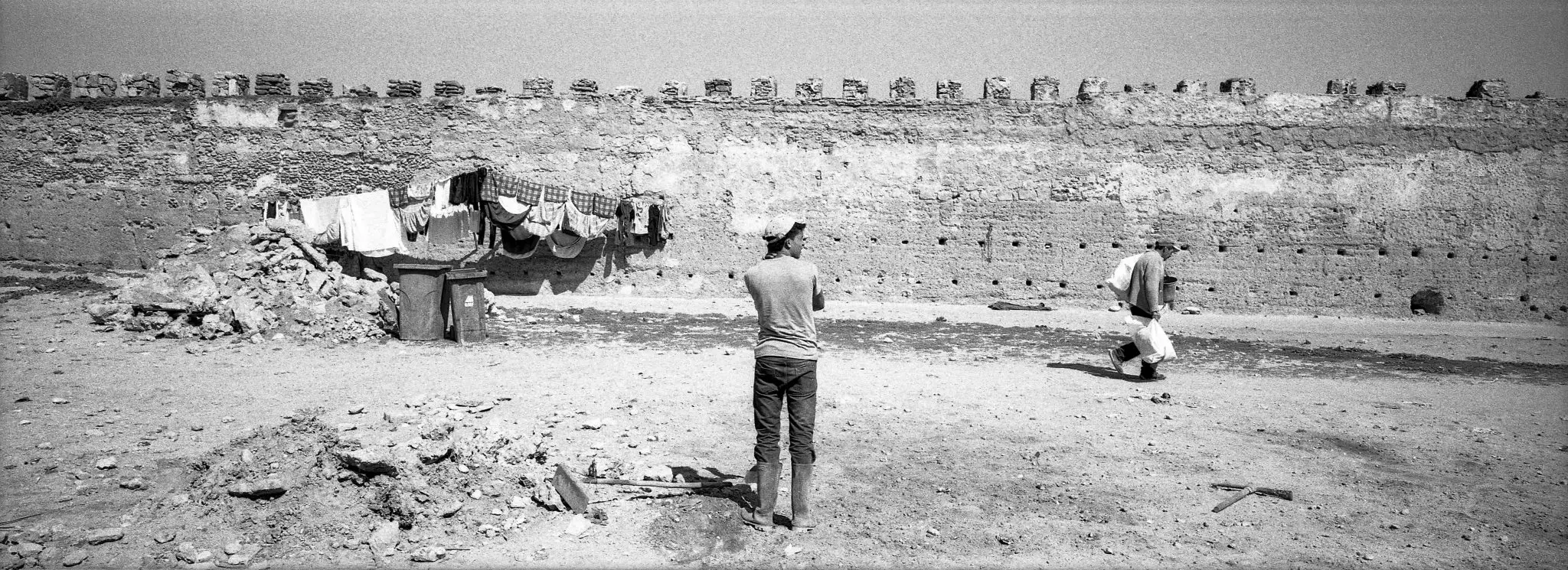
The Hasselblad XPAN
First off, let’s cover some basic technical information, most of which you likely already know from earlier submissions to 35mmc, but hey, it’s obligatory in a camera review. Oh, and note please note that I have not bothered to photograph my XPAN for this review. If you want XPAN camera porn, then consult reviews by Hamish, Nick Holt or Jeff Price, all available on 35mmc. Or just do a google image search.
The Basics
The XPAN is a 35mm, manual focus, rangefinder camera with an aperture priority/ exposure compensation mode and all manual exposure option. It’s ‘schtick’ is that it shoots a wide-format or ‘panoramic’ negative. Rather than producing the classic 24mmx36mm (2:3) frame that we have all come to know and love, it shoots an almost double frame – 24mmx65mm to be precise. This is wide enough to make even the 16:9 aspect ratio look boxy. Given you are using more film to produce each frame, a 36 exposure roll will net you typically 21 frames. The XPAN also has a regular 24×36 format option and the ability to switch between the two formats mid-roll. There are only three lenses available for the camera system: 30mm, 45mm and a 90mm. Aperture is controlled by a ring with all three lenses.
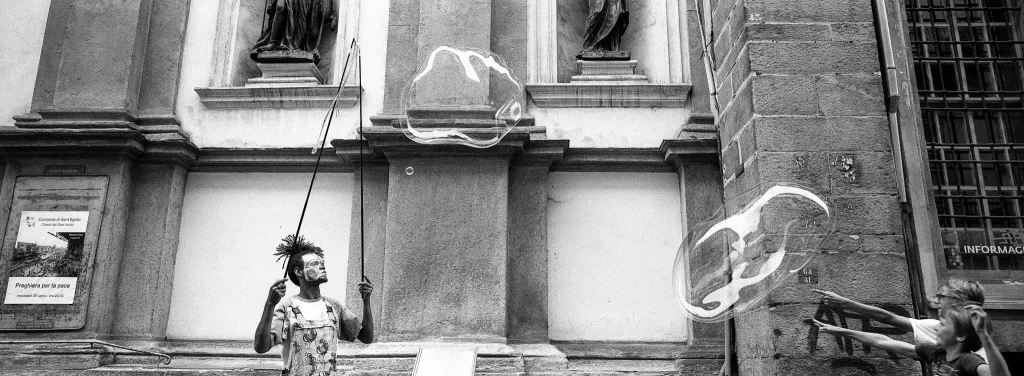
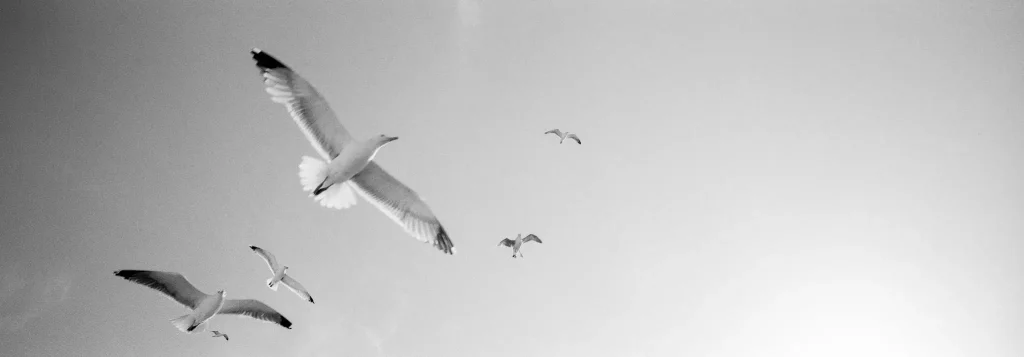
Technical Features
The XPAN has pretty standard set of features. It boasts a manual ISO dial (with DX-coding option), PC sync port, top-mount hot shoe, standard tripod socket, continuous mode of 2fps, self-timer, basic auto-bracketing option, LCD frame counter and lens release button. There is also a very primitive LCD display on the back of the camera that displays shutter speed or ISO information depending on which mode you have selected. The rear LCD also has an illumination button for use in low-light situations. Finally, there is a small recessed button requiring the use of a pen or pin which engages the automatic rewind mechanism should you wish to extricate the film mid-roll. And that is about the size of it. To my mind it is a pretty simple camera, although now that I list out its features, it has got a few bells and whistles in there, I guess.
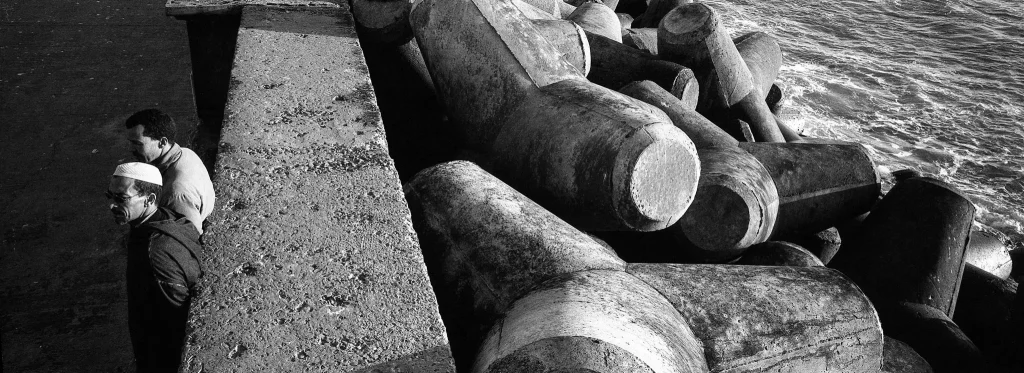
The ‘Soul’ of the XPAN.
As I stated up front, I am quite a fan of this camera. For me, the genius of the XPAN lies in the marriage of the wide format and the form factor of a 35mm rangefinder. Let me explain.
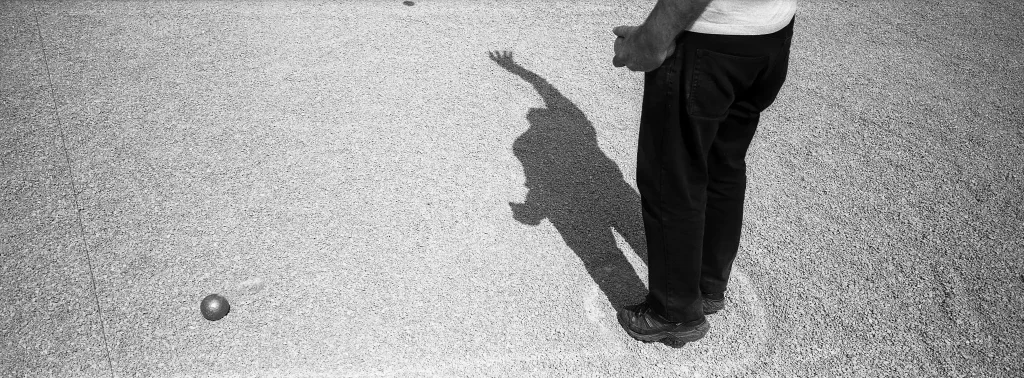
Firstly the wide format frame is unquestionably distinctive. I will delve into my views on the wide format a little further down but suffice to say that it certainly opens up new and interesting compositional possibilities. Secondly, the camera has the portability of a traditional 35mm rangefinder camera. In contrast to the medium format panoramic cameras that require the use of a tripod in most situations, the XPAN has essentially given the panoramic frame, traditionally the IP of the landscape photographer, to a whole host of other photographers. To my mind, this is the soul of the XPAN.
The absence of a mirror box or pentaprism gives the camera a relatively diminutive and unassuming form factor and the 35mm film format means the camera remains a reasonable size and weight. While the XPAN is not Leica small/light, it is eminently portable and hand-holdable. When you combine this with the clear and engaging window out onto the world that rangefinder shooting provides, one can see how street, documentary, conceptual photographers or everyday general shooters could really find the camera an enticing proposition. It also leaves you with a negative that is plenty big enough to make large prints, in comparison to most ‘panoramic’ formats made by cameras that simply crop 35mm top and bottom to make a 12x36mm frame. The image quality produced by this size negative with cameras lenses is of a very high quality in my opinion and I have made prints up to 32 inches on the long edge.
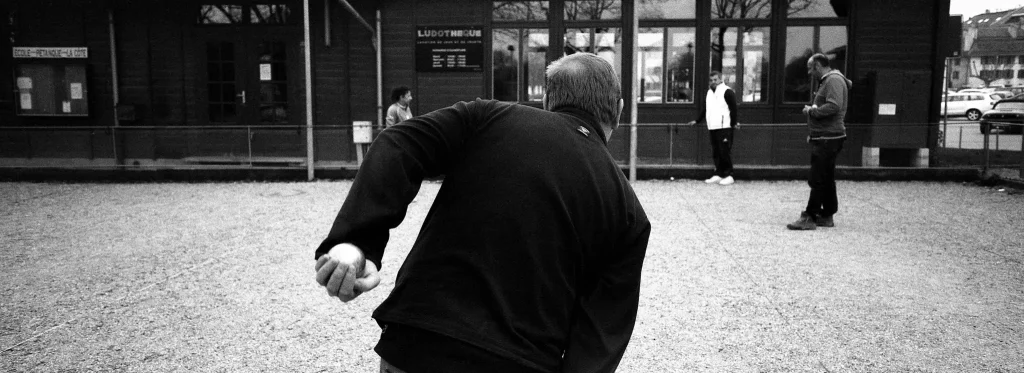
Others are welcome to disagree, as well as use the camera for whatever they wish obviously, but for me the camera has fundamentally been a street and documentary camera. I have shot the odd portrait with the XPAN as well as a few urban landscapes here and there. However this review should be taken as coming from largely a street and documentary perspective.
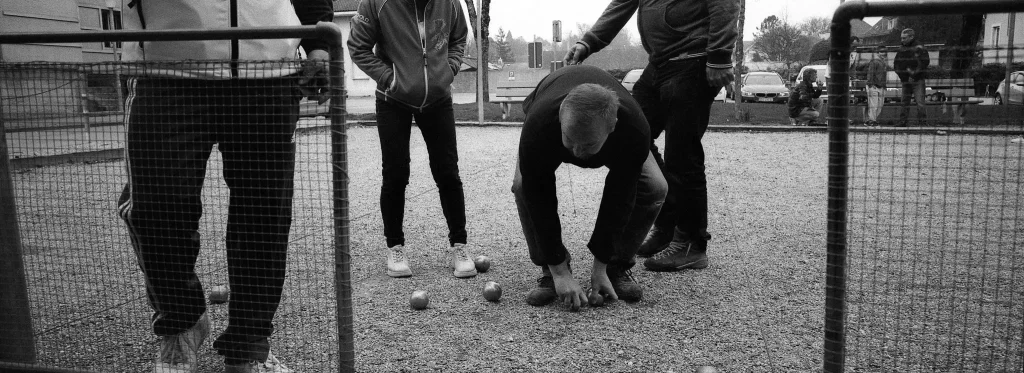
Design, Ergonomics and Finish
I’ll take this moment to make a few quick comments on the ergonomics of the camera as it will round out the overview of the camera as well as explain why I feel the camera is a enjoyable tool to use.
The camera’s external body is made from titanium and aluminium. While it is only 1cm taller than an M camera, it is relatively wide due to the wide-format shutter size. These dimensions and finish give the camera some heft. With the oft-used 45mm lens on the front, the camera weighs 1085 grams. While Hamish and others have described the camera as heavy, my feeling is that this depends on what you compare it to. Certainly if you compare it to a compact or an even a leica M, it is unquestionably heavier. However, it is about the same weight as a manual 35mm SLR with a 35mmf2 or a 50mm1.4. The XPAN is not a light camera. But it is not heavy either. Basically, I have never felt the camera’s weight be a hindrance when out shooting.
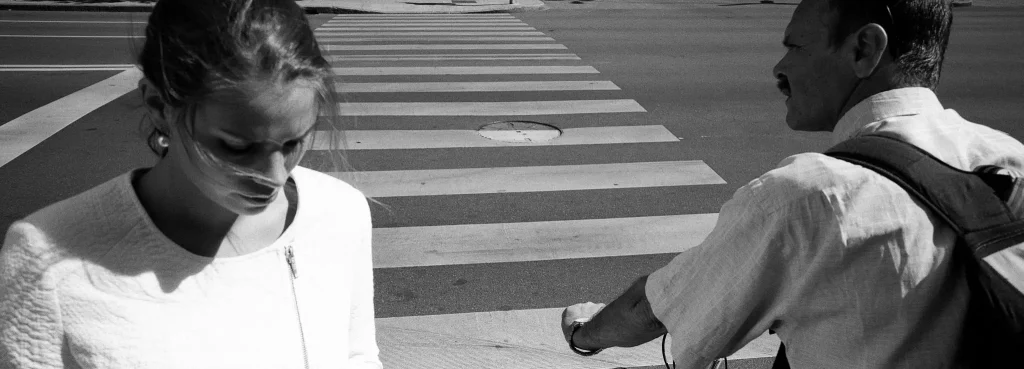
The XPAN also has small rubberized grip parts on the front and back of the camera. I know some people find the grip annoying or pointless, and so, your opinion may vary depending on your shooting style and hand size. Personally, I have found that the grips aids my style of shooting, with strap (thin threaded nylon) wrapped around my wrist 2-3 times, and essentially have the camera almost glued to my right hand. I have routinely shot for 5+ hours on end using the camera in this fashion. If I stretch my memory, there have been periods when at the end of a couple of days of long days of shooting, I had a mild ache in that wrist. But then again, most cameras will do that to me with this kind of use.
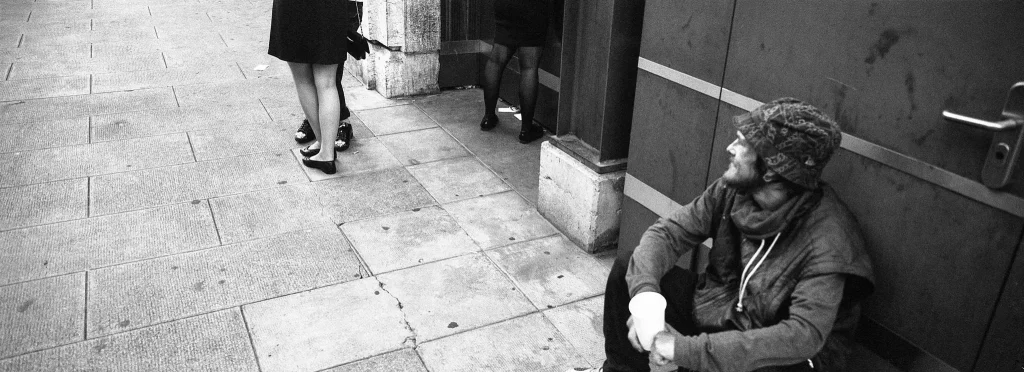
Finally, the camera sports a gunmetal silver finish that is tacky and chips of the camera body. Most people rail at this. I am a little more philosophical. The XPAN looks beautiful if you find a good condition version, and then as it wears, it sports a unique signature of use. Rafa Gonzalez, who is a skate and urban landscape shooter has a well worn XPAN chipped to buggery which has a rag-tag rough and tumble quality. Alternatively, I have seen some that have been professionally re-painted. Basically, while it won’t ever brass like an M, there are plenty of other way to get your camera porn fix with this tool as it ages. Alternatively, the camera was sold as a Fuji TX-1 in Japan. It is exactly the same camera and lenses, but comes in a silver finish that won’t chip.
My XPAN Experience: Fulfilling a Vision
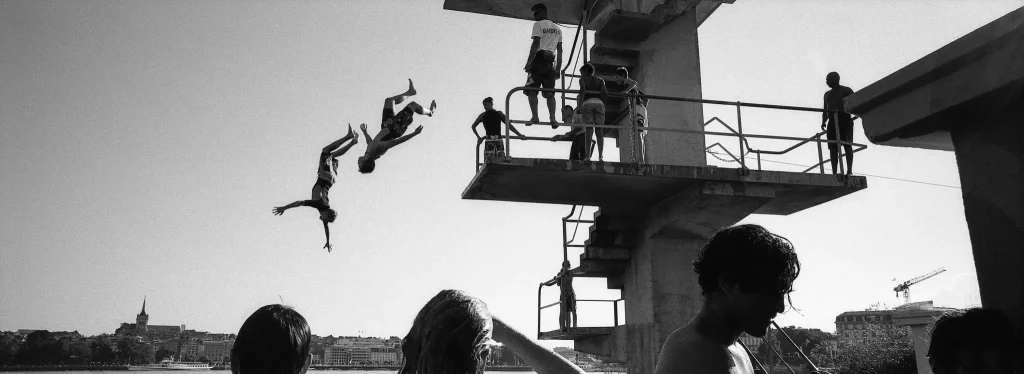
G.A.S. of a different kind
The XPAN sparked a dose of G.A.S. (Gear Acquisition Syndrome) unlike anything else I have ever experienced with any other camera. In a good way. Like many photographers, I have lusted over plenty of cameras, and will periodically give in to G.A.S. lust. Sometimes those purchases turn out to be worthwhile and I keep them. Other times, no so much and I sell them. But with the XPAN, it was different.
The XPAN was love at first sight. The first time I learnt about the camera was when I saw the DP Review lads review the XPAN on their youtube channel. The two of them walked around HK with a couple of film cameras and Kai was shooting the XPAN. I was left speechless. As the images he took flashed up on the screen, a whole series of images immediately raced though my mind’s eye just as quickly. In an instant, I could see all these images in my head that I wanted to make.
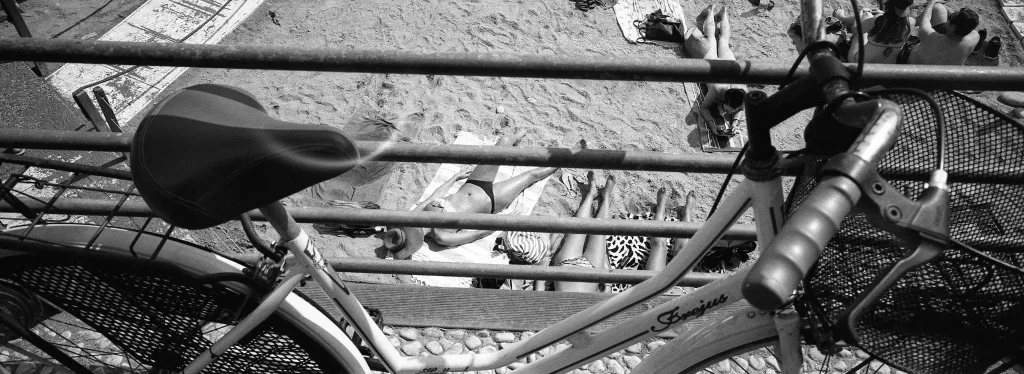
At the time, I was having my first love affair shooting a ‘street’ image as well as working on some reportage and conceptual documentary projects. I had been working with 35mm and 28mm lenses for the most part. I could see how the panoramic frame would give me a new visual problem to solve. My curiosity was piqued. It took the better part of 6 months to find the funds and then bite the bullet. Once I had the camera, for the better part of a year, it was the only camera I shot.
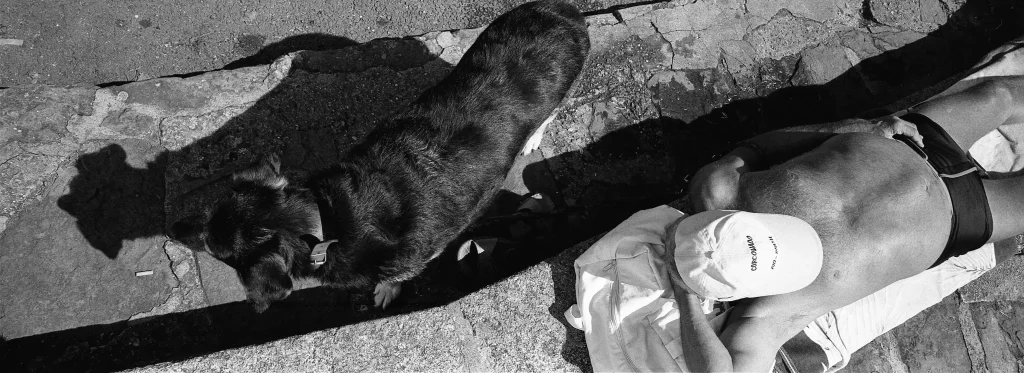
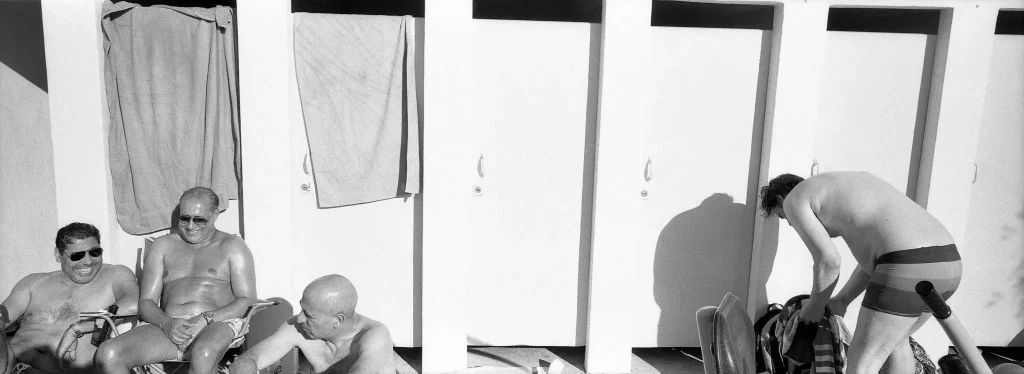
One Camera; One Lens; One Film
Inadvertantly, I embarked on a ‘one camera/lens/film’ project of sorts that lasted about 10 or so months. I say inadvertantly because it wasn’t my intention. It’s just how things turned out. Once I had the XPAN, it was all I felt like shooting. I was in love with camera and enjoyed exploring its possibilities. As far as the lens went, I only had the 45mm. The 30mm is pretty out of reach for most of us price wise at $US2500, and the 90mm didn’t really interest me. In terms of film, I had always been a black and white shooter so I stuck with HP5 because it was easily pushed to 1600 and it was cheap. I shot the occasional roll of colour, but it was an exception.
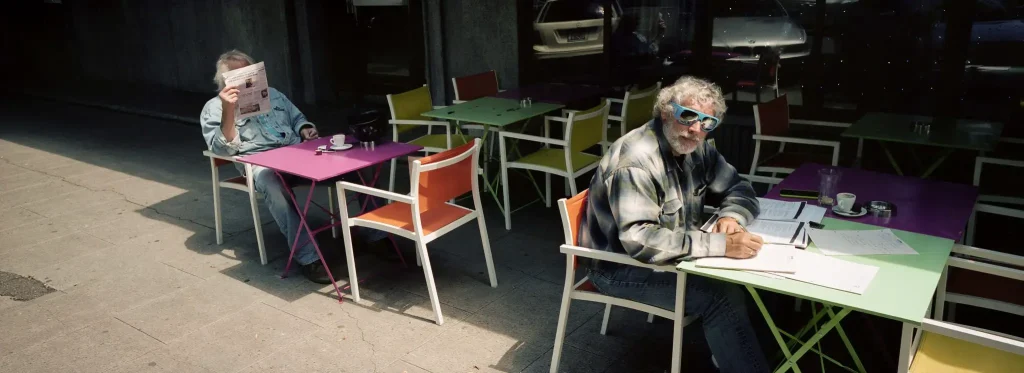

As I think back on this time, it was a period of photographic bliss. I was shooting largely for myself and so could follow my nose. I was shooting with a new sense of curiosity about what was possible given the new format. I sort of fell into the beautiful simplicity and thoughtlessness of shooting with a fixed set of tools. My mind was therefore free to wander for moments, explore compositions and find good light. As the months rolled by, I felt I started to see more clearly with the camera, to develop a vision with it and merge it with my shooting style and identity as a photographer. As I got comfortable with the XPAN, I also felt that I started to challenge myself to make new and interesting compositions, as well as see ever more possibilities in my mind’s eye. I also started to be able to predict how the wide frame would interpret scenes.
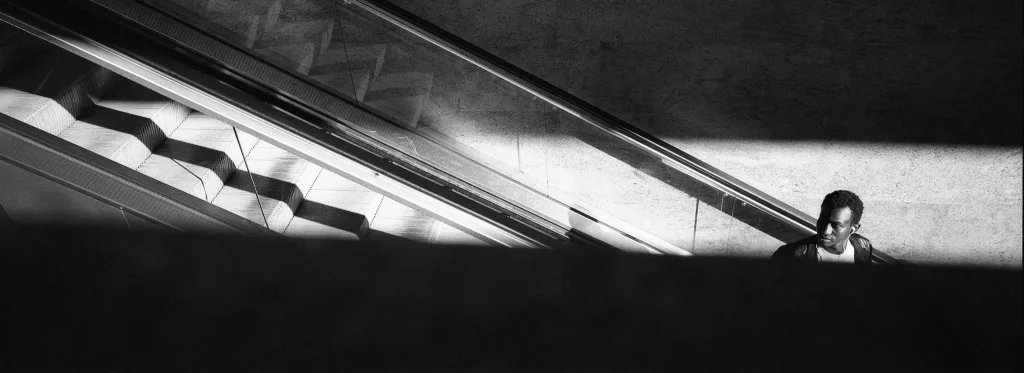
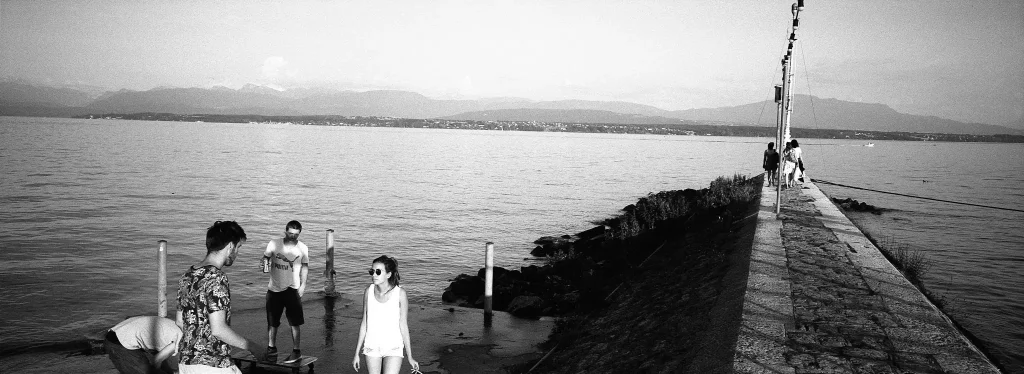
Possibilities, Pitfalls and Practice.
I previously mentioned that I had seen a whole host of images pass through my head when I first learnt of the XPAN. They didn’t all come out at once though. It took time for me to learn the camera’s possibilities. Strangely, the very first roll netted me a couple of images that I still love today. And I was able to get one or two images on most rolls that pointed me in the direction that I wanted to go. Unquestionably though, I had a lot misses and it took me a while to learn what worked and what didn’t. I found this is particularly the case street where you don’t have any control over the scene and have to frame and focus quickly.
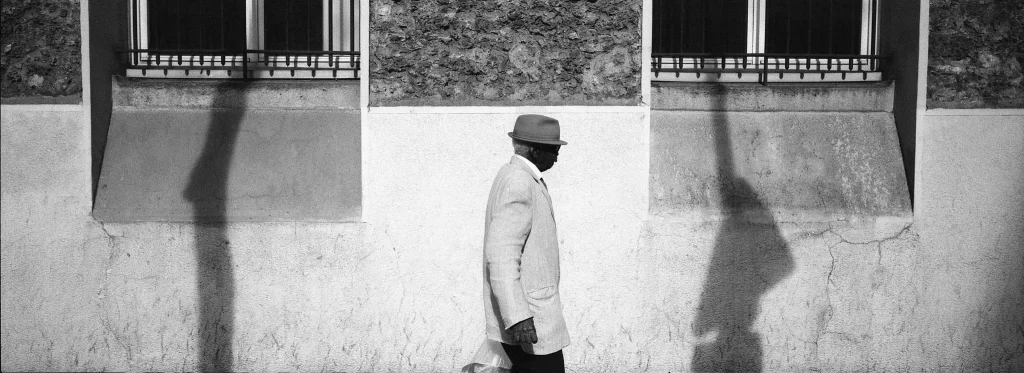
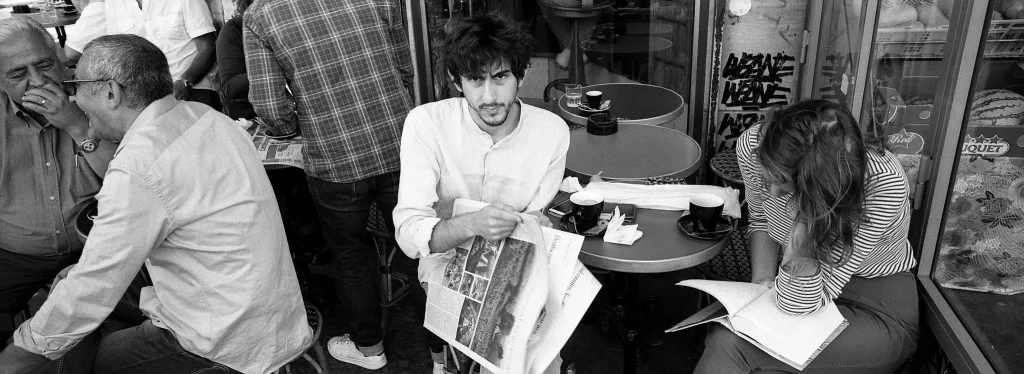
I also had to bid a farewell to some previous compositional possibilities in my mind’s eye that I was used to when shooting 2:3. The really wide edge imposes itself on you. Sure, it opens up possibilities, but it shuts others down as well. You have more of the scene to play with, but you have to resolve all that scene compositionally. I also had to be careful to fill that really wide frame and not leave too much clutter or unbalanced space at either end. A lot of the time, you find something interesting, and then have to re-evaluate where it can be placed given what else is around it. Essentially, the wide negative has some pitfalls.
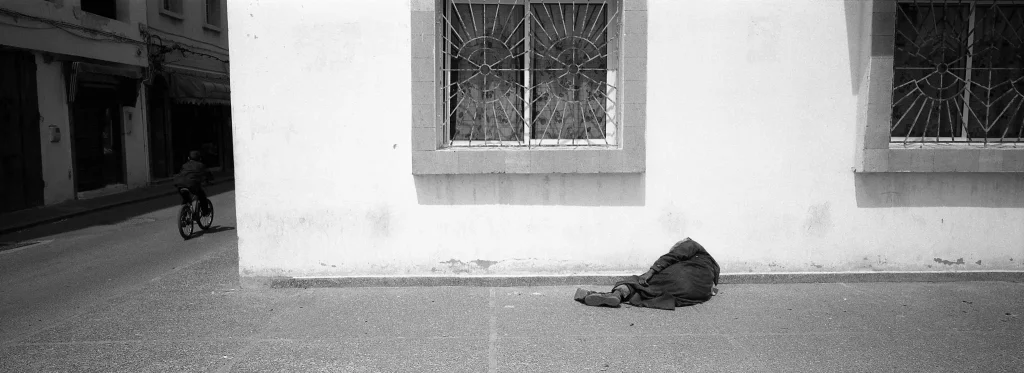
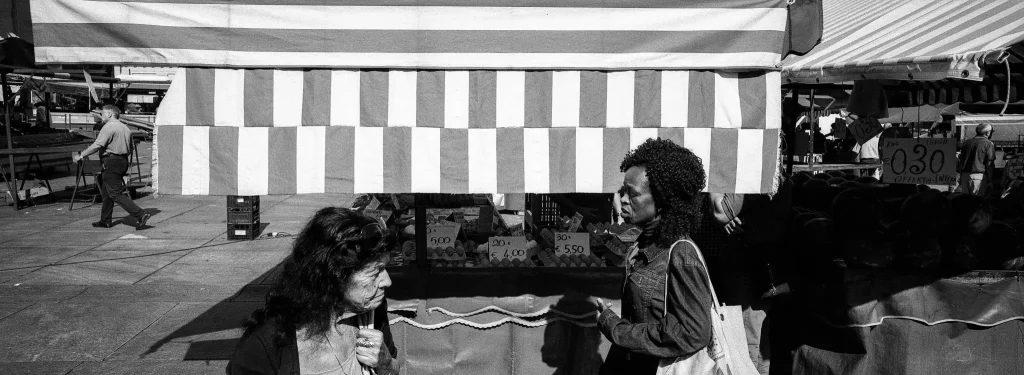
I also completely stopped shooting in vertical mode, which was hard for me. I also noticed that while I had a really wide neg, I was somewhat blinkered on the vertical edge even in landscape orientation. Because I has been used to shooting with 35mm and 28mm lenses, I was used to being able to drink in a more of the scene, even with a horizontal composition, compared to the xpan’s 45mm. Eventually, I found myself shooting a very different type of image. This journey in itself was an interesting a realisation. I found it very frustrating to begin with, and found myself having to step back more than I wanted. And yet, when I bought the camera, I had wanted a new look and a new visual problem to solve. There was some gnashing of teeth along the way.
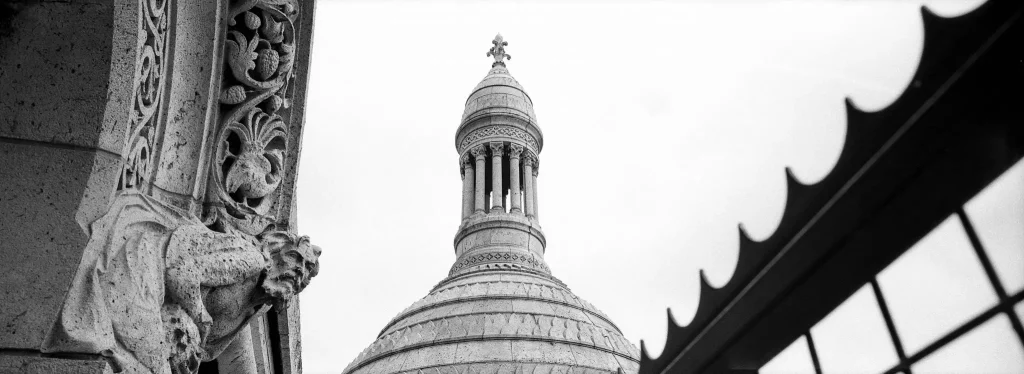
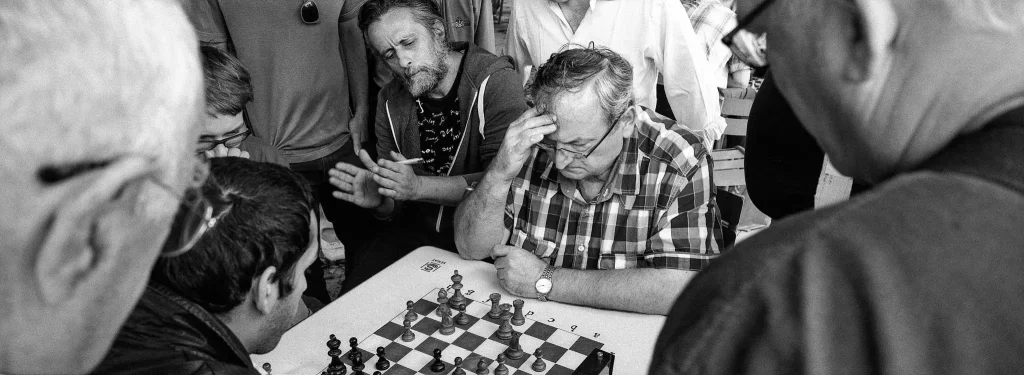
There is only one way to get to Carnegie hall….
Ultimately, I had to shoot a lot with the camera to get the results and have the experience that I did. It helped that from the very beginning I was intrigued by the camera. It also helped that I was willing and able to largely put down all other formats for a while. If you don’t give yourself enough time to learn and bond with a camera, it isn’t going to feel natural or enjoyable to use. This is true of all tools, but especially so with a different format. I committed to using it exclusively and had some specific projects that I wanted to use it on, which created the impetus for me to shoot and ‘learn how it saw’, as it were. This would be my advice to new XPAN shooters and is probably how my experience varied most from Hamish’s.
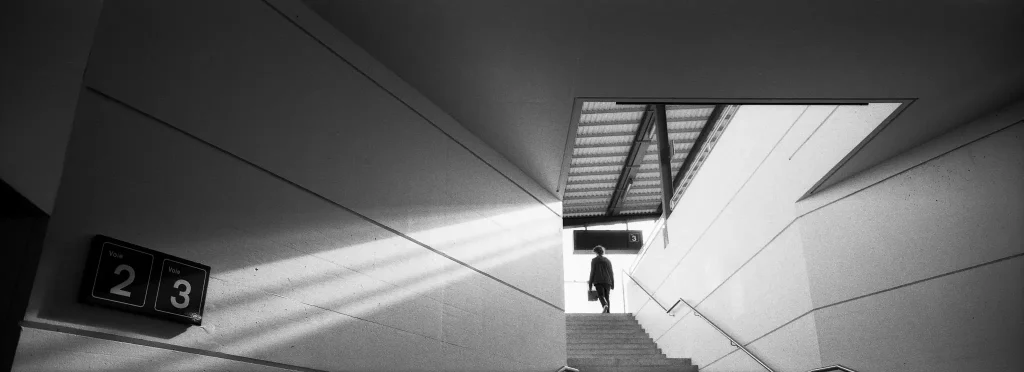
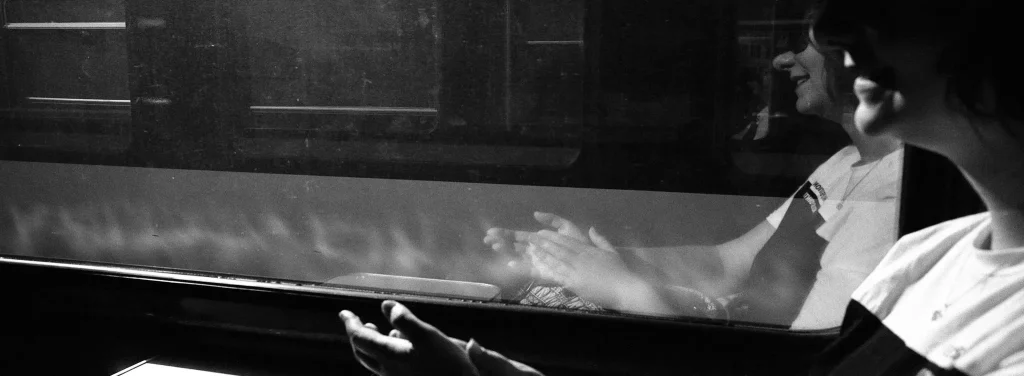
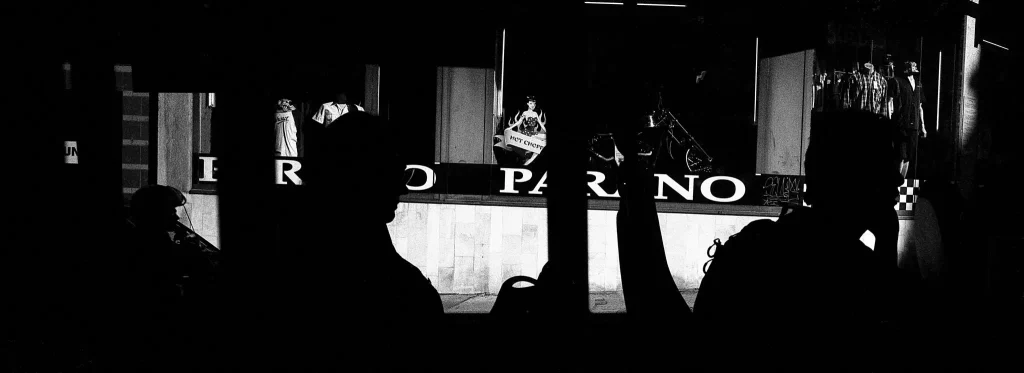
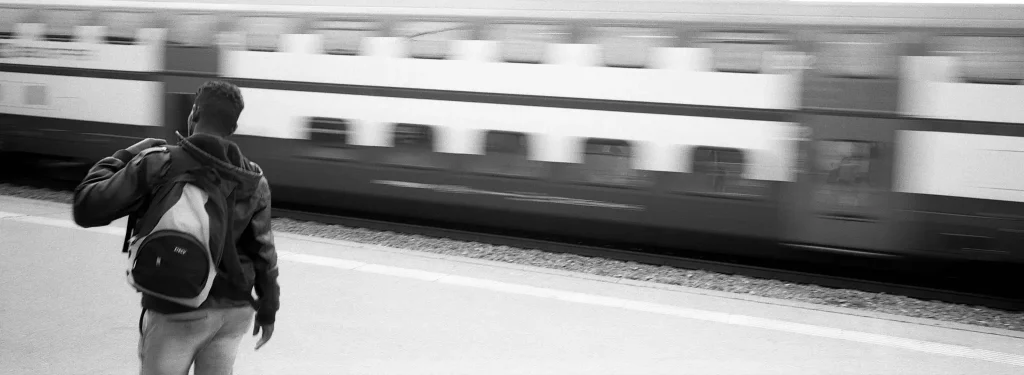
Falling out of love?
Since purchasing the camera a couple of years ago, where I call home has changed. Street photography isn’t really what I am up to and I am between documentary projects. Also, when my xpan needed servicing (more below), I was without the camera for a few months and it served as a chance to take stock. I started working on new projects, changed cameras/formats and my XPAN usage dropped off significantly as a result. I took one trip this year dedicated to photographing with the XPAN. I have yet to develop all the film (and there is a good 70+ rolls), but I found the experience revealing. I was out of practice with it, and not as inspired to shoot with it. I was also trying to push myself to make new compositions with it, and tried to rush this learning process, rather than letting the slow cycle of shoot and review takes its’ course.
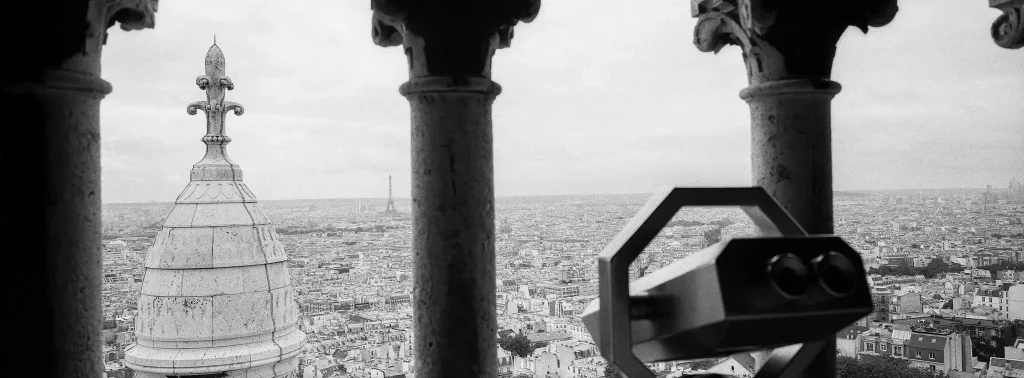
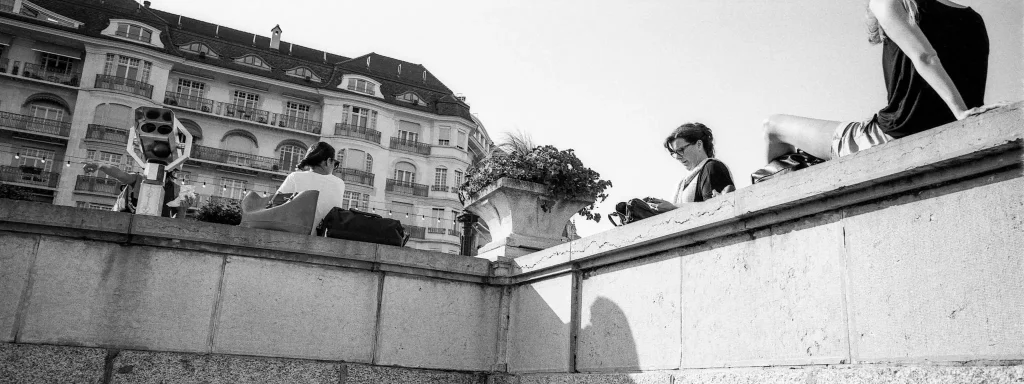
Not a Chance
And yet while I am not head over heels in love with the XPAN anymore, I am keeping my copy. I think I bonded with it too strongly, and given the likelihood that I will one day prowl the streets or shoot documentary style imagery with it again, I don’t want to have to buy the camera again when that urge arises. I feel as though the wide-format has become part of my photographic DNA. If in a few years, I still haven’t shot it again, or made photos that I really love with, I will sell it. But for the moment, the camera still intrigues me. It’s just that it’s a slow burn now.
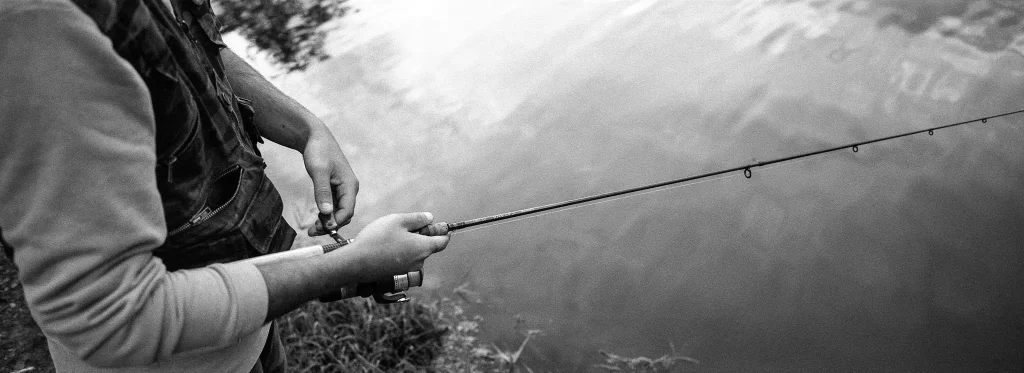
Keeping an eye to the Future
I’ll even admit something else to you all. I still research the XPAN online. I still look at reviews and blog posts on the XPAN, re-read information, and look through flickr and instagram for work that was produced with the XPAN. Part of the inspiration to do this came from Eric Kim (yes, I said it), and his suggestion that one fight G.A.S. by reading reviews of cameras you already own, essentially re-inspiring yourself to shoot with you gear you already own. This has led me to find new photographers using the camera, or in fact, older collections out there on the internet, which has helped me to conceive of possibilities with the format down the road. So yeah, I am keeping mine. It may well die on me and I’ll regret having kept it, but that’s life.
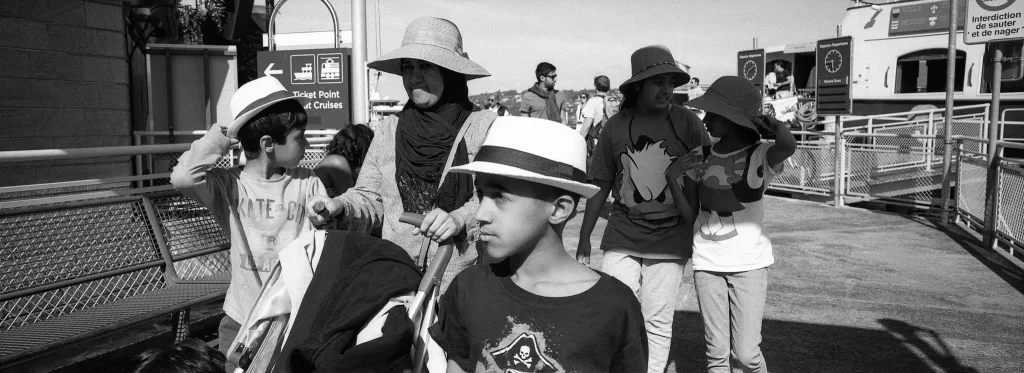
Less is more
The XPAN experience has also left a mark on how I think about cameras and how they can work for me. Specifically, I have found that limiting my tools (ie, one camera, one lens) seems to have been a very productive means of harnessing my creative side. I have also started to consider the camera as secondary to the idea, and only think about a ‘which’ cameras/ lenses/film once I have got an idea about how the imagery should look. The experience also helped me to see why using one camera at a time can really help you find a zen with it. All of this has seemed to help me narrow my focus in terms of G.A.S.
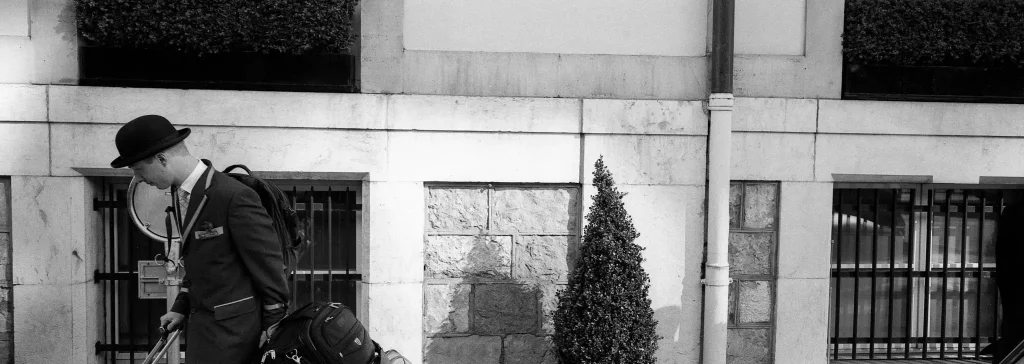
No One is Perfect
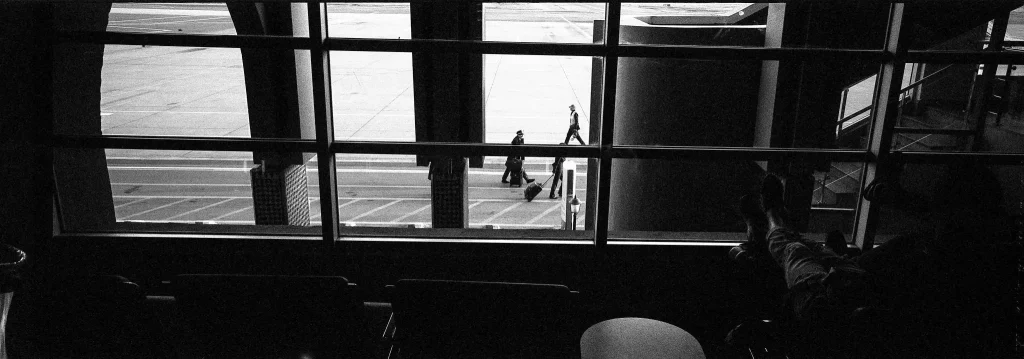

Perfect is the Enemy of the Good
No camera is perfect, and no camera review is complete without a few user gripes thrown in. Before I list my gripes with the camera, I should state that because the camera is basically a one of a kind, you have to just kind of learn to live with the flaws. I was stopped a couple of months back on the street by a couple of M shooters who asked me what I thought of the XPAN. I responded by saying “look – it is basically the only option for what it does. The camera certainly has some hang-ups, and a couple of flaws in my opinion, but you either learn to live with it or you don’t shoot a handheld panoramic camera”. Overall it is great camera to use, which is really the bottom line. But with that intro aside, here is my list of grumpies. I can really break them down into a couple of minor quibbles and a major hang-up.
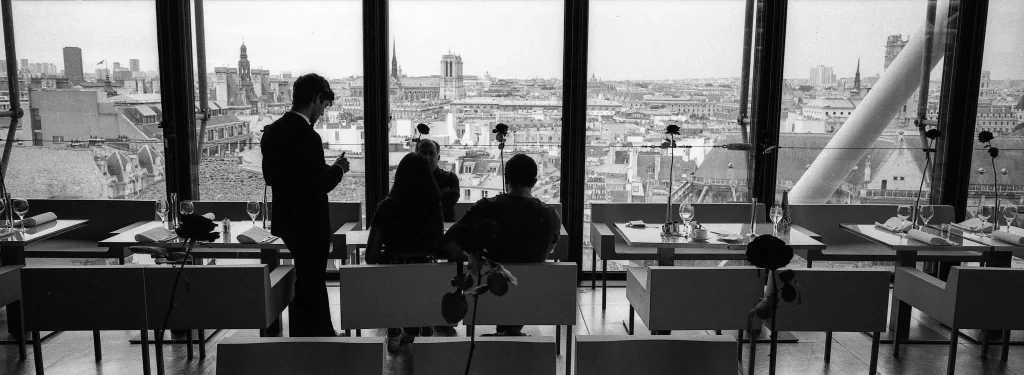
Quibbles
They went some way to changing this with XPAN II, but when you look into the viewfinder, you have a very basic meter reading to the effect of ‘- o +’. There is no shutter or aperture information. Honestly, it took me very very little time to adjust to this. I learnt to dial in exposure before hand and when I felt I needed to know/be reminded of my aperture, I would move the ring to the nearest end, typically f22 in my case, and then count the stops going back, all the while with my eye to the viewfinder.
Same goes with the shutter dial. While ‘a task’ the first dozen times, I was probably less than 5 rolls in when this manoeuvre took less than 2 seconds. I wouldn’t mind if shooting information were to magically appear though.
The XPAN was the first rangefinder that I ever shot. Now that I have shot other rangefinders, I can say that when I return to shooting the XPAN, the viewfinder is a little small. It is wide enough but it would nice if it was a big taller. It is kind of keyhole like.
The lenses aren’t fast, being either f4 or slower so don’t expect great results handheld in low light.
This complaint is also petty but the lens hood for the 45mm is a pretty tight fit, and in order for me to remove the lens cap, I have to remove the lens hood first and then put the hood back on afterwards (and vice versa when putting camera away). First world problems.
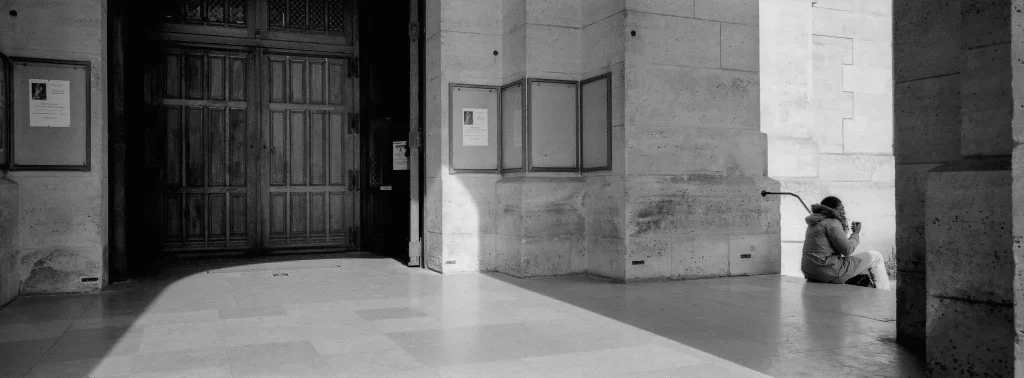
Electronics and the Auto Wind – Doomed to Fail
Ok, so this is the real gripe that I have with the camera. I have thought about this a fair bit, and, all things considered, I wish this camera had a manual film advance. Unfortunately, the XPAN is not a camera that will be shot forever and a day. It is electronically driven, and I am not just talking about the shutter, but the film advance mechanism as well. One can therefore assume that they will die eventually. Probably all of them. Given it is a cool, fun and expensive camera, that is kind of a major bummer.
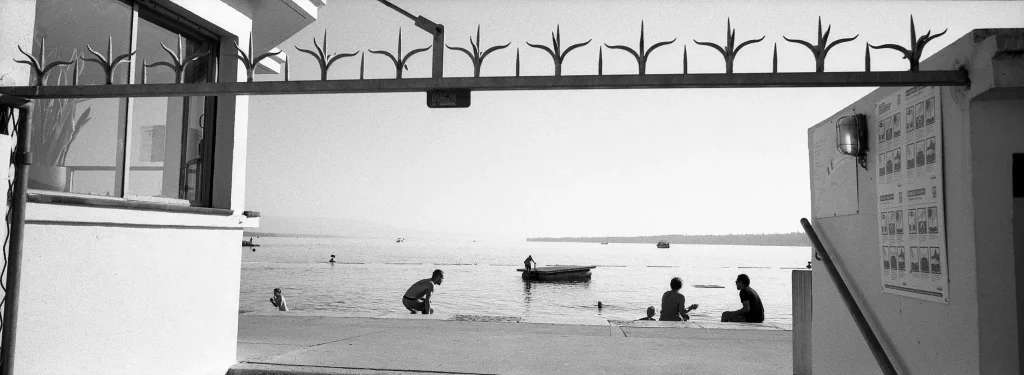
Rare Parts
I actually had my XPAN’s film advance die on me, literally in the airport as I was heading on a trip. I had it sent it to Hasselblad in New Jersey, who still complete repairs on the XPAN so it was all fine. I had the opportunity to speak to their repair guru who explained that while the XPAN is still serviced (cleaned, calibrated and repaired), few parts are still produced for it and some specific parts are becoming scarcer. Now maybe maybe maybe in the age of 3D printing there will emerge a hero who will print these rare parts. But still, there is an inherent flaw in the design that threatens the camera’s longevity. It is bad enough to have the shutter be subject to electronic failure, but the film advance as well? GULP.
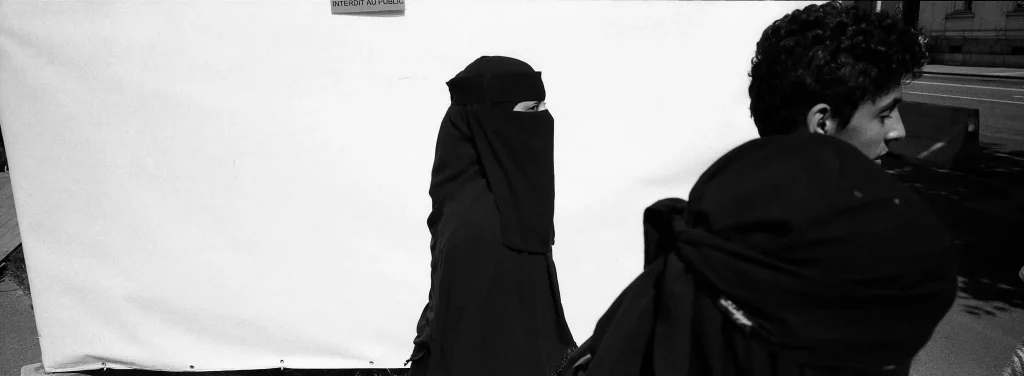
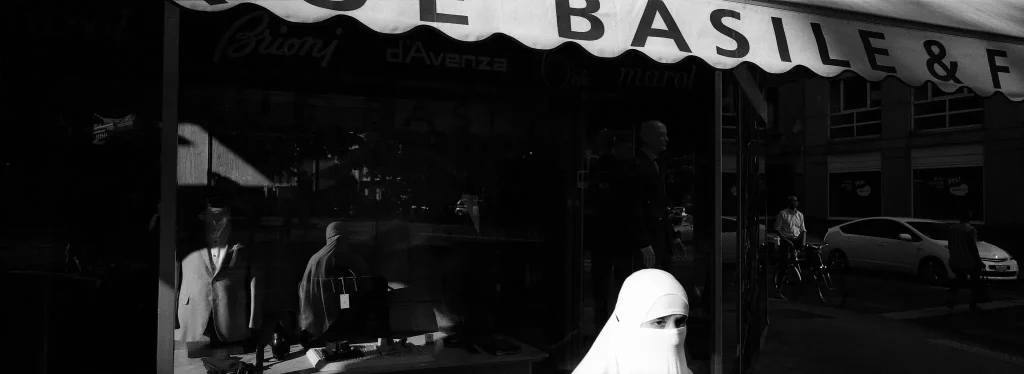
Wasted Frames
I am also frequently left with completely unexposed film at one end of the roll as a result of the automatic film advance. I like to get the most out of a roll of film, and am frequently squeezing 38, sometimes even 39 frames out of 36 exposure roll in my traditional manual 35mm cameras. I find it endlessly frustrating when I pull out film from my tanks to see clear unexposed film that would have netted me sometimes even two spare frames on an XPAN. Lee J has a great blog post on his site getting two extra frames out of his XPAN, which I haven’t tried yet, but certainly will.
A Touch Noisy, too
The automatic film advance is also by far the loudest sound made by the camera when you make a frame. In the event that the camera was a manual advance, it would be a quieter camera. It isn’t obnoxiously loud but when shooting in quiet situations the camera will be heard. On the street, I have found the camera is still stealthy enough. I will admit the auto advance makes street shooting convenient because you don’t need to re-action to make another frame. This makes shooting a second or third frame quicker, even in single shot mode. Ironically, it also allows you to be pretty discreet, by not having to make the film advance gesture and thereby alert the subject that you have just made a frame.
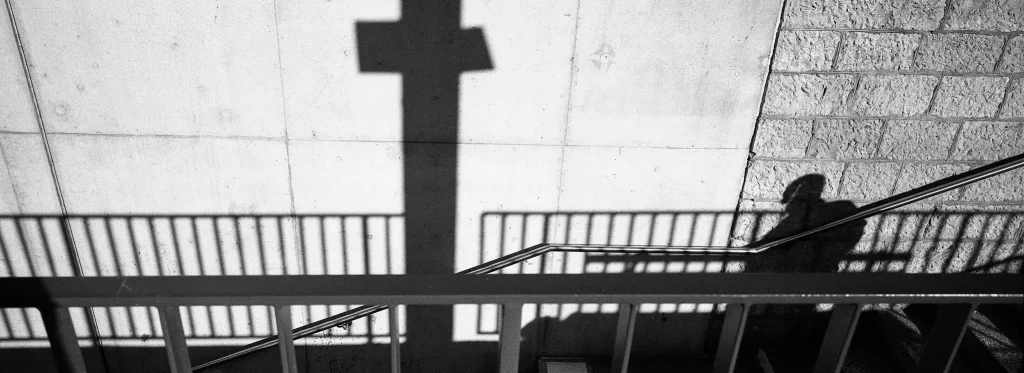
2:3, anyone?
The rationale for the auto advance of course is that it enables the camera to reposition the film in order to switch between panoramic and normal frames at any time mid roll and not waste film. While this is a handy feature, I have hardly ever used it. I rarely ever shoot 2:3 with that camera, even though I sometimes think that I should more often. Perhaps I would feel differently about the auto-wind function if I used the 2:3 format option more frequently. I simply prefer carrying a separate 2:3 camera, if that is the way I am going to go.
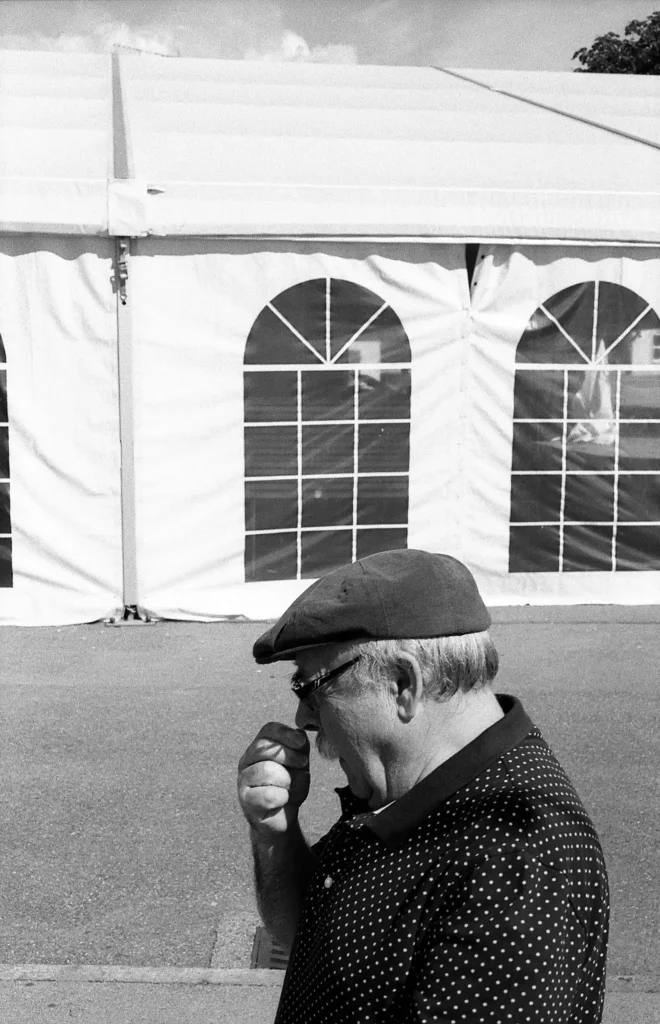
Saving Exposed Frames
Finally, the automated advance also unspools the film completely out of the canister when it is first loaded into the camera. It then rewinds the film back into the canister, frame by frame as you shoot. Should you happen to open the camera before the roll has been completed, the majority of the frames that you’ve taken will be safely stored in the canister. Probably not the last frame you have shot, but all the frames before that.
That was probably more information on the camera’s auto advance feature than you wanted, but given it is my major gripe, I felt it only fair to go into enough details to weigh up the pros and cons. As I said, I would prefer a manual film advance just because it would take a whole series of parts that could be break and irreplaceable and remove, which I feel would remove at least some uncertainty about the camera.
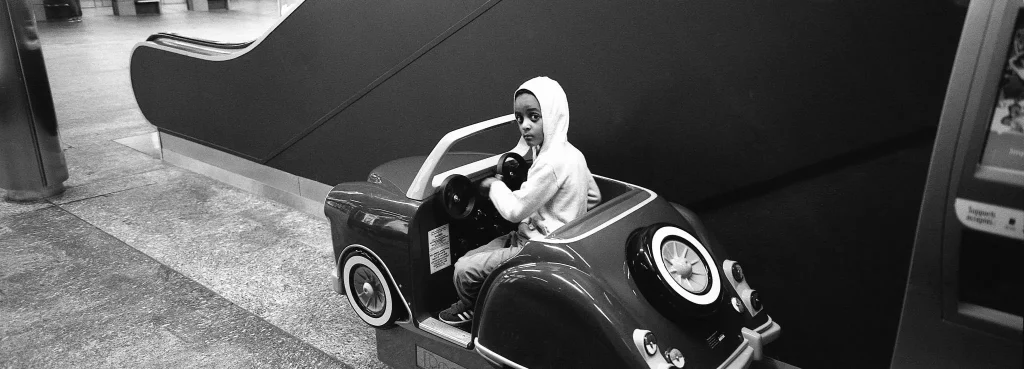
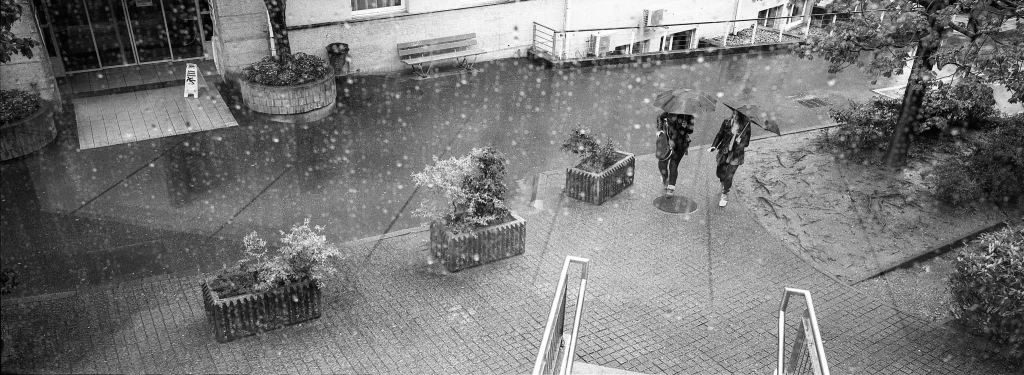
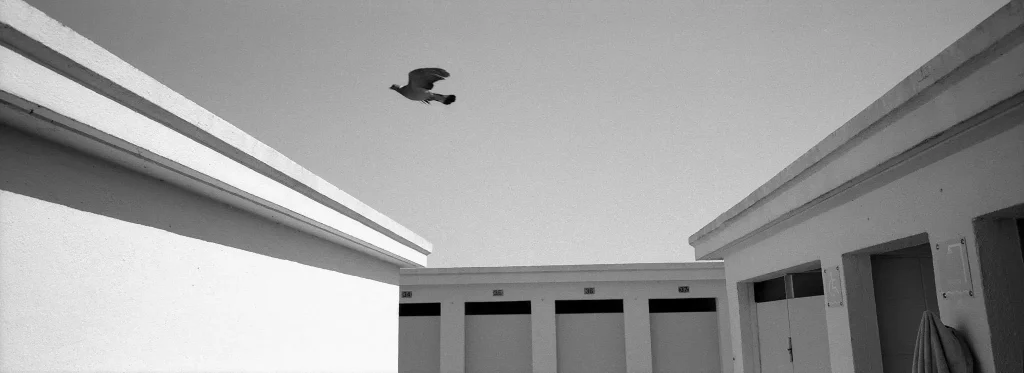
Skip to the end
The XPAN is fantastic camera. It wooed me from the start and didn’t fail to disappoint me. It was a camera that lived up to its promise and the panoramic frame fascinates me. I have more or less moved on from shooting the camera consistently, largely as a result of geography and new projects with new visions. I always bought that camera to shoot street and documentary imagery, and when that work went on hiatus with my move back to the American west, so too did my plans to shoot it. I then started to conceive of photographs with other cameras and have been quite happy letting my XPAN sit on the shelf (for the most part). I have moved to shooting social landscapes and portraiture, but have turned to other cameras to shoot this.
While I haven’t shot anything serious with that camera in a while, and have thought about selling it, it holds too strong a place for me sentimentally and I feel confident that when geography, circumstance and inspiration allow it, I will return to shooting with the XPAN again (I hope, at least). I want to use that camera to shoot in colour. Also, the truth is that the panoramic frame still fascinates me, and has become part of my identity as a photographer. I find it harder to shoot in an everyday way with the wide frame, but it makes for a unique and interesting perspective and is capable of producing some striking imagery.
Share this post:
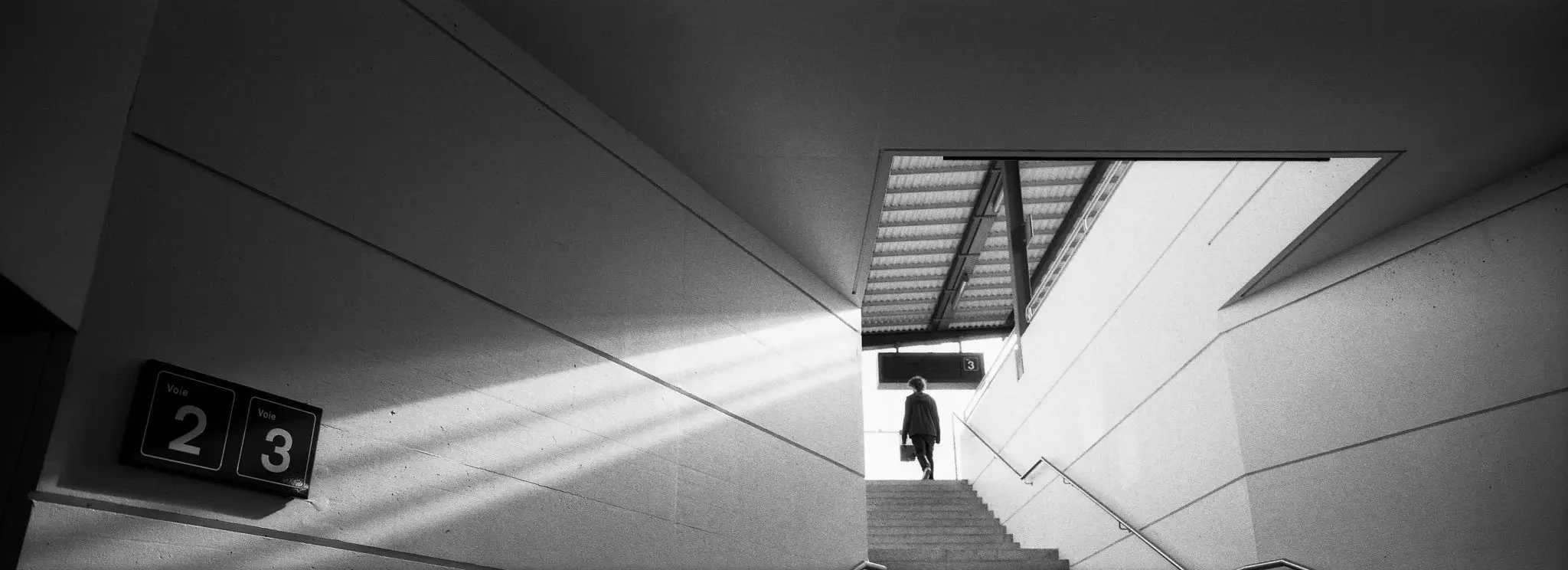








Comments
StephenJ on Hasselblad X-Pan Review – Fulfilling a Vision – By Cal Stewart
Comment posted: 07/04/2018
I must say that I am surprised that you find Kai and gang inspiring, they are very funny, sometimes informative, but hardly inspiring.
The reason for the somewhat slow lenses is that they are basically medium format in that they are producing a much larger image circle than a standard format 35mm lens. Which brings me to an idea for future cogitation...
Could one not design a Mercury configuration that produces the required image circle but records on 35mm film, or a digital back (even)? This would have the benefit of being able to ditch the Hassies without a qualm, once the bodies become unusable... The Mercury concept could even employ those Hasselblad/Fuji lenses, but the rest of the camera would be completely manual and last forever as an occasional configuration.
Oh, and did I say that I loved your pictures and the imaginative use of the format?
Thanks again.
Comment posted: 07/04/2018
Simon on Hasselblad X-Pan Review – Fulfilling a Vision – By Cal Stewart
Comment posted: 07/04/2018
Comment posted: 07/04/2018
Alex Bacon on Hasselblad X-Pan Review – Fulfilling a Vision – By Cal Stewart
Comment posted: 07/04/2018
Aet Tafil on Hasselblad X-Pan Review – Fulfilling a Vision – By Cal Stewart
Comment posted: 07/04/2018
That is the only camera that I never acquired.
I have a near terminal case of G.A.S. but somehow I never succumbed to acquiring an X-PAN.
Closest I ever came was a Russian panoramic 35mm.
I also had a FUJI GX6X17 but it was way too cumbersome.
Now, after reading your article, it's rekindled my desire for an X-PAN.
Comment posted: 07/04/2018
Tim Sewell on Hasselblad X-Pan Review – Fulfilling a Vision – By Cal Stewart
Comment posted: 07/04/2018
Comment posted: 07/04/2018
tim on Hasselblad X-Pan Review – Fulfilling a Vision – By Cal Stewart
Comment posted: 07/04/2018
Comment posted: 07/04/2018
Joey on Hasselblad X-Pan Review – Fulfilling a Vision – By Cal Stewart
Comment posted: 08/04/2018
Comment posted: 08/04/2018
John on Hasselblad X-Pan Review – Fulfilling a Vision – By Cal Stewart
Comment posted: 08/04/2018
I particularly love the paradox of the Xpan frame that gets "more" in, but is often at its best when the negative space means "less".
Thanks for writing this and putting my camera back to the top of the list to take out.
Comment posted: 08/04/2018
Lee J on Hasselblad X-Pan Review – Fulfilling a Vision – By Cal Stewart
Comment posted: 08/04/2018
Your point about the servicing slightly disagrees with what Hasselblad UK told me, I asked them a couple of months ago after almost killing my camera when out on the slopes and they said "I regret that neither the Xpan or the 203 FE camera are no longer supported due to the lack of spare parts.". This is a concern given I'm shooting long term projects with the camera so am considering a backup body.
Lee J on Hasselblad X-Pan Review – Fulfilling a Vision – By Cal Stewart
Comment posted: 08/04/2018
Your point about the servicing slightly disagrees with what Hasselblad UK told me, I asked them a couple of months ago after almost killing my camera when out on the slopes and they said "I regret that neither the Xpan or the 203 FE camera are no longer supported due to the lack of spare parts.". This is a concern given I'm shooting long term projects with the camera so am considering a backup body.
Comment posted: 08/04/2018
Comment posted: 08/04/2018
Comment posted: 08/04/2018
Comment posted: 08/04/2018
Comment posted: 08/04/2018
Adam Laws on Hasselblad X-Pan Review – Fulfilling a Vision – By Cal Stewart
Comment posted: 10/04/2018
Your photography and composition are exquisite. One of the finest examples I've seen with an XPAN. Sadly I've checked under the sofa and there isn't enough change for an XPAN alas :(
FrankenPan: The Hasselblad Xpan with a 35mm F2.8 PC Nikkor - A Users' Review. Cal Stewart - 35mmc on Hasselblad X-Pan Review – Fulfilling a Vision – By Cal Stewart
Comment posted: 20/07/2018
Panomicron Oxygen review - A 3D Printed Hasselblad Xpan Alternative - 35mmc on Hasselblad X-Pan Review – Fulfilling a Vision – By Cal Stewart
Comment posted: 24/12/2018
Hasselblad XPan – Xpand the panoramic - Photo Thinking on Hasselblad X-Pan Review – Fulfilling a Vision – By Cal Stewart
Comment posted: 23/05/2019
XPan Mode Isn’t What Hasselblad and OnePlus Must be Doing - Storjub on Hasselblad X-Pan Review – Fulfilling a Vision – By Cal Stewart
Comment posted: 23/09/2021
XPan Mode Isn’t What Hasselblad and OnePlus Should be Doing – Giga Tech News on Hasselblad X-Pan Review – Fulfilling a Vision – By Cal Stewart
Comment posted: 23/09/2021
XPan Mode Isn’t What Hasselblad and OnePlus Should be Doing – ICT Digital on Hasselblad X-Pan Review – Fulfilling a Vision – By Cal Stewart
Comment posted: 23/09/2021
XPan Mode on the OnePlus 9 Pro isn’t the most entertaining exercise of Hasselblad’s expertise — UsaDots – UsaDots on Hasselblad X-Pan Review – Fulfilling a Vision – By Cal Stewart
Comment posted: 23/09/2021
XPan Mode Isn’t What Hasselblad and OnePlus Should be Doing | Digital Trends - TRIVIDI DIGITAL on Hasselblad X-Pan Review – Fulfilling a Vision – By Cal Stewart
Comment posted: 24/09/2021
XPan Mode on the OnePlus 9 Pro isn’t the best use of Hasselblad’s expertise - Techio on Hasselblad X-Pan Review – Fulfilling a Vision – By Cal Stewart
Comment posted: 24/09/2021
XPan Mode Isn’t What Hasselblad And OnePlus Should Be Doing | The DSLR Website on Hasselblad X-Pan Review – Fulfilling a Vision – By Cal Stewart
Comment posted: 24/09/2021
XPan Mode on the OnePlus 9 Pro isn’t the best use of Hasselblad’s expertise on Hasselblad X-Pan Review – Fulfilling a Vision – By Cal Stewart
Comment posted: 25/09/2021
Jon Robinson on Hasselblad X-Pan Review – Fulfilling a Vision – By Cal Stewart
Comment posted: 08/10/2022
Rhys Thomas on Hasselblad X-Pan Review – Fulfilling a Vision – By Cal Stewart
Comment posted: 20/11/2023
YOu've inspired me to try loading 35mm film into in to my Koni Omega. That should give 24 x 70mm, plus some exposure of the film sprocket holes. Unfortunately my youngest broke my 58mm lens when he was very small, I have to make do with the 90mm now.